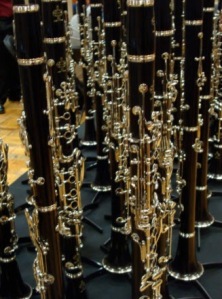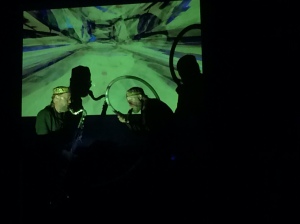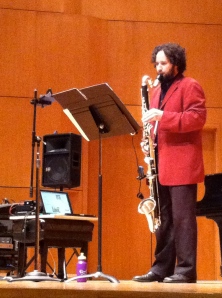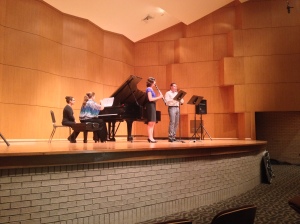 What a whirlwind of a conference! With a record of more than 1400 registrants, this has been said to be the largest ClarinetFest to date. Bravo to Mr. Robert DiLutis and his team on an extremely successful conference, and bravo for choosing such a relevant topic. With workshops on navigating social media, marketing, and creating your own business along with traditional classes on reeds, masterclasses, and excerpts, clarinetists were given a wealth of information to help make them more well-rounded and prepared professionals of today. In today’s musical marketplace, musicians are not only expected to play styles from jazz to classical, but they must be able to create a concert series, build an audience, and function as an educator in order to remain relevant. Does this seem daunting? Of course it does, but none of these things in and of themselves are impossible, it’s about finding your voice, and with the tools from this year’s ClarinetFest, young and established professionals alike are more prepared for the changing face of our field.
What a whirlwind of a conference! With a record of more than 1400 registrants, this has been said to be the largest ClarinetFest to date. Bravo to Mr. Robert DiLutis and his team on an extremely successful conference, and bravo for choosing such a relevant topic. With workshops on navigating social media, marketing, and creating your own business along with traditional classes on reeds, masterclasses, and excerpts, clarinetists were given a wealth of information to help make them more well-rounded and prepared professionals of today. In today’s musical marketplace, musicians are not only expected to play styles from jazz to classical, but they must be able to create a concert series, build an audience, and function as an educator in order to remain relevant. Does this seem daunting? Of course it does, but none of these things in and of themselves are impossible, it’s about finding your voice, and with the tools from this year’s ClarinetFest, young and established professionals alike are more prepared for the changing face of our field.
All that being said, in addition to navigating a “business model,” we have to have the goods. The best marketing strategy, most inventive ideas, and attractive personalities are meaningless if you do not have the artistic skills and technique as a foundation for your musical endeavors. With inspiring concerts and recitals throughout each day and closing each evening, we were constantly reminded of the fierce dedication we must have to our craft and the level of excellence we must strive for.
For more details about entrepreneurship and the world of clarinet, search this blog. Each blog is tagged with topics such as entrepreneurship, bass clarinet, jazz, the names of specific artists performing and presenting, etc. See you at ClarinetFest 2015 in Madrid, Spain hosted by Pedro Rubio and Justo Sanz!
–Notes by Melissa Morales
Melissa Morales is a master’s student at DePaul University studying with Julie DeRoche and Larry Combs. She currently teaches at The People’s Music School and performs with The Candid Concert Opera’s Orchestra Nova and the Chicago Symphonic Winds.





